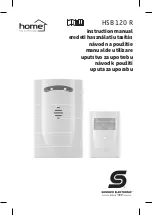
CV-L107CL
10
6.
Functions and Operation
6.1.
Basic functions
The CV-L107CL is built around three high-performance CCD line scan image sensors mounted on a
prism block, as illustrated in Figure 6.
During exposure, the incoming light is converted to electrons (electric charge) in the photodiodes
(active pixels). The transfer gate controls the transfer of charge from photodiodes to the shift
register. Activating the transfer gate terminates the exposure cycle, transfers the charge to the
Horizontal Shift Register (2-phase buried channel CCD shift register) and starts a new exposure
cycle. The line is subsequently read out in a single sequence starting with pixel 1.
The exposure time is normally the same as the cycle time (in No-Shutter mode). By using the
Exposure Control Gate (in Shutter-Select or Pulsed Width Control trigger modes) the exposure time
can be individually set to be shorter than the cycle time (the inverse of line rate). This also allows a
fixed exposure time, independent of the line rate. In the CV-L107CL the exposure time can be set
individually for all three channels.
Fig. 6 Principle of a 3CCD line scan camera
Red channel CCD sensor
Green channel CCD sensor
Blue channel CCD sensor
Y-axis
Motion of object
X-axis
Sensor scanning
IR-cut filter
Fig. 7
Sensor block diagram
Active pixels












































